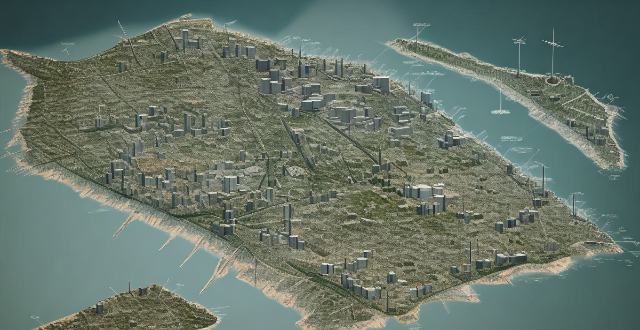Climate adaptation strategies for coastal cities are essential to mitigate the impacts of climate change such as sea-level rise and storm surges. Effective strategies include building resilient infrastructure, managing coastal ecosystems, enhancing community resilience, and integrating climate considerations into urban planning. These measures aim to protect critical infrastructure, transportation networks, and coastal areas while promoting sustainable development and ensuring the safety of residents.

Effective Climate Adaptation Strategies for Coastal Cities
Climate adaptation strategies for coastal cities are crucial as these areas are particularly vulnerable to the impacts of climate change, such as sea-level rise, storm surges, and increased temperatures. Here are some of the most effective strategies:
1. Building Resilience in Infrastructure
a. Elevating and Retrofitting Buildings
* Critical Infrastructure: Ensure that critical infrastructure like hospitals, schools, and power plants are elevated or reinforced to withstand floodwaters.
* Residential Areas: Encourage the elevation of homes and buildings in high-risk zones to reduce damage from flooding.
b. Improving Drainage Systems
* Green Infrastructure: Implement green roofs, permeable pavements, and rain gardens to manage stormwater runoff.
* Stormwater Management Plans: Develop comprehensive plans that include detention basins and upgraded sewer systems to handle increased rainfall.
c. Protecting Transportation Networks
* Elevated Roads and Rail Lines: Elevate critical roads and rail lines in flood-prone areas to maintain transportation during flood events.
* Resilient Design: Incorporate resilient design elements into new transport infrastructure projects.
2. Managing Coastal Ecosystems
a. Restoring Wetlands and Mangroves
* Natural Barriers: Restore and protect wetlands and mangroves which act as natural barriers against storm surges and erosion.
* Biodiversity Conservation: Promote biodiversity by protecting these ecosystems, which also supports local fishing industries.
b. Beach Nourishment
* Replenish Sand: Regularly replenish sand on beaches to maintain their height and protect against erosion.
* Dune Restoration: Restore and stabilize dunes which provide a natural buffer against storm surges.
c. Controlling Erosion
* Hard Structures: Build sea walls or breakwaters where necessary to prevent shoreline retreat.
* Soft Solutions: Use eco-friendly alternatives like offshore reefs or artificial islands to minimize environmental impact.
3. Enhancing Community Resilience
a. Early Warning Systems
* Flood Forecasting: Develop advanced flood forecasting tools to provide early warnings to the community.
* Disaster Alerts: Establish effective disaster alert systems through multiple platforms including social media, broadcasts, and mobile alerts.
b. Education and Training
* Awareness Campaigns: Conduct awareness campaigns to educate residents about climate risks and adaptation measures.
* Emergency Drills: Hold regular emergency drills to prepare communities for evacuation and response during disasters.
c. Financial Support for Adaptation
* Insurance Mechanisms: Develop insurance mechanisms that encourage investment in adaptation measures.
* Funding Programs: Create funding programs to support local adaptation projects and initiatives.
4. Integrating Climate Considerations into Urban Planning
a. Zoning Regulations
* Restrictive Zoning: Implement restrictive zoning in high-risk coastal areas to limit development.
* Building Codes: Update building codes to ensure new constructions are designed to withstand future climate conditions.
b. Long-term Planning
* Climate-proof Design: Incorporate climate-proof design principles in long-term urban planning.
* Sustainable Development: Prioritize sustainable development that considers the impact of climate change on the city's growth.
By implementing these strategies, coastal cities can become more resilient to the challenges posed by climate change, ensuring the safety and well-being of their inhabitants while contributing to global efforts to adapt to a changing climate.